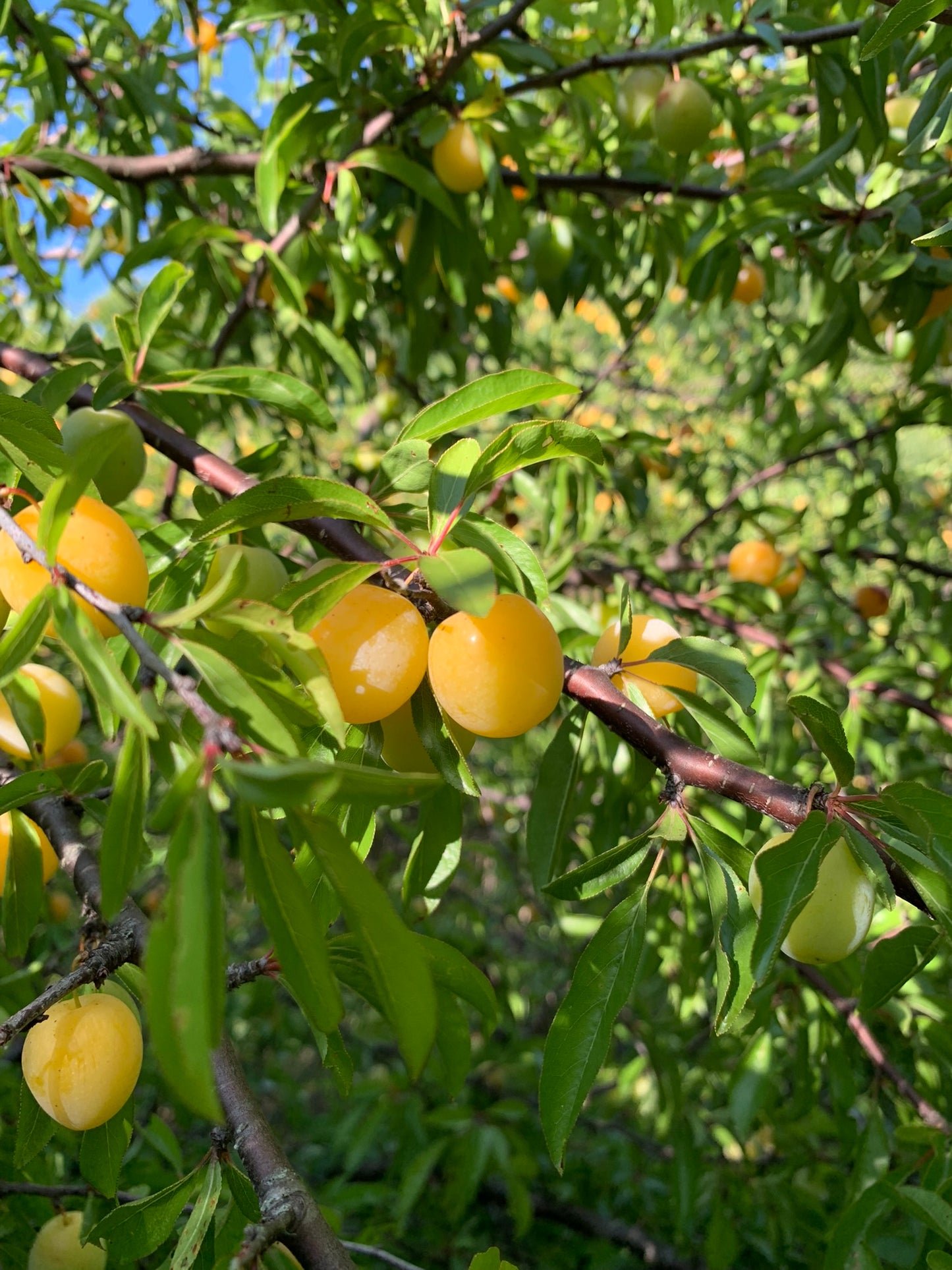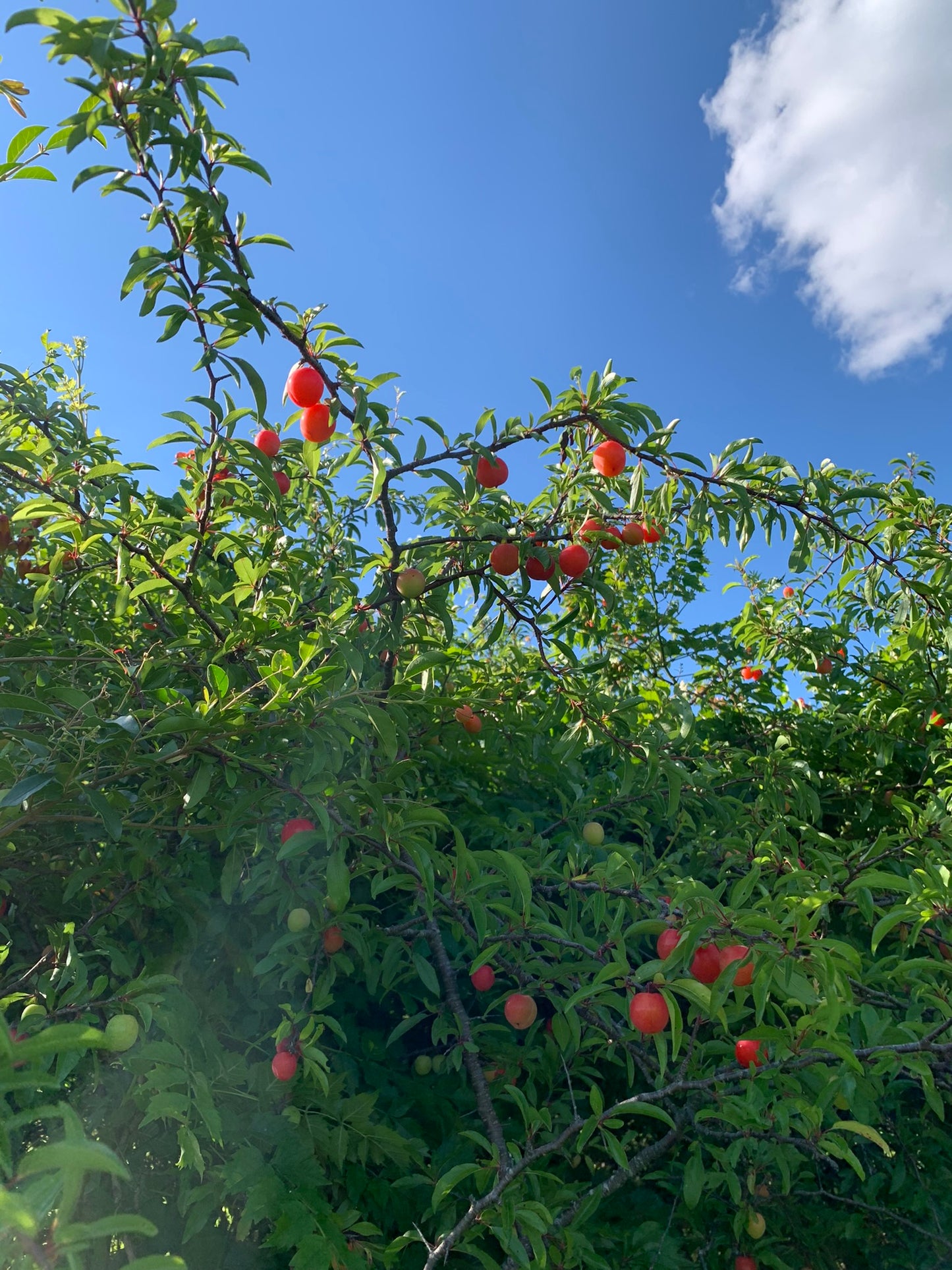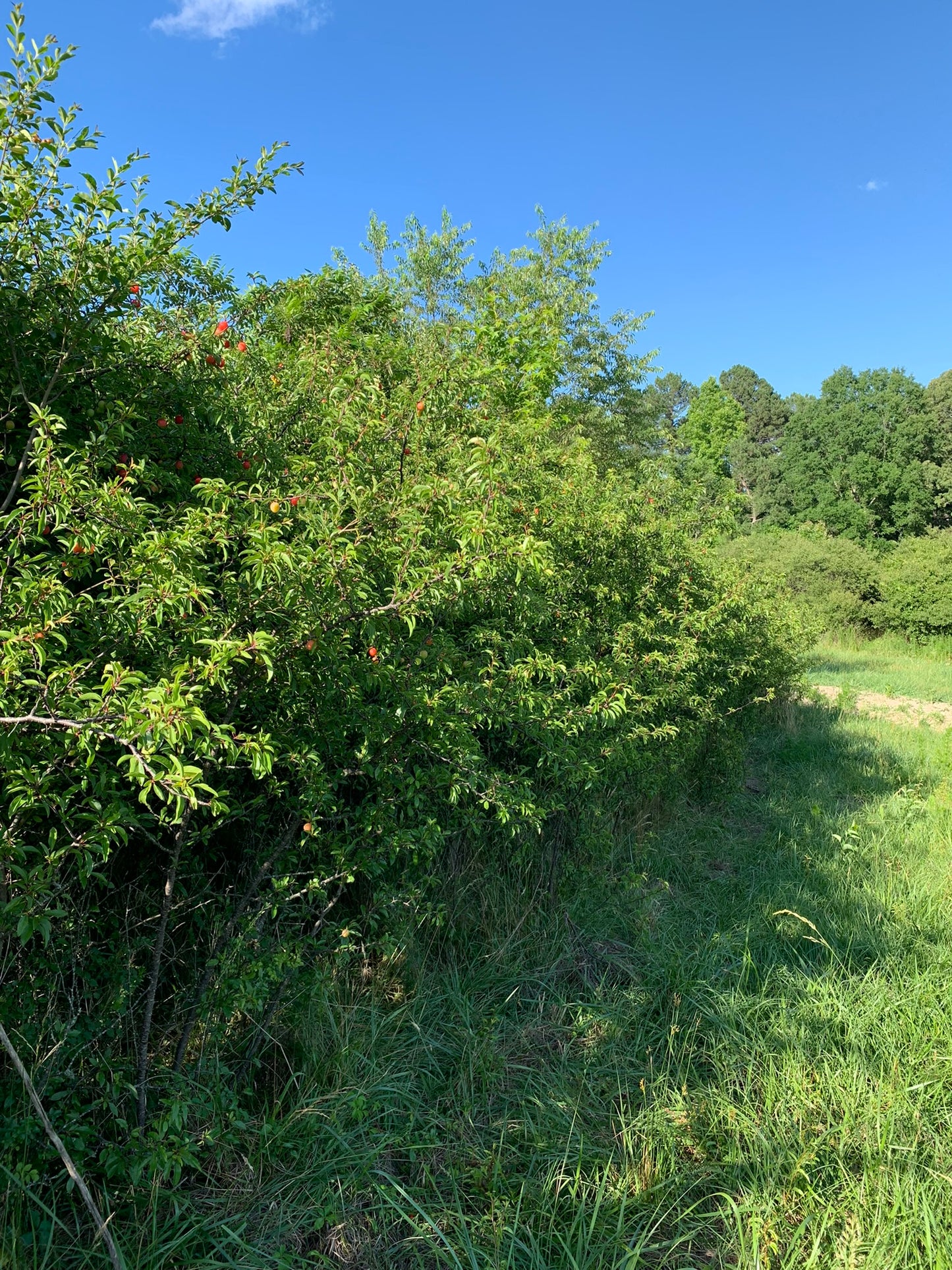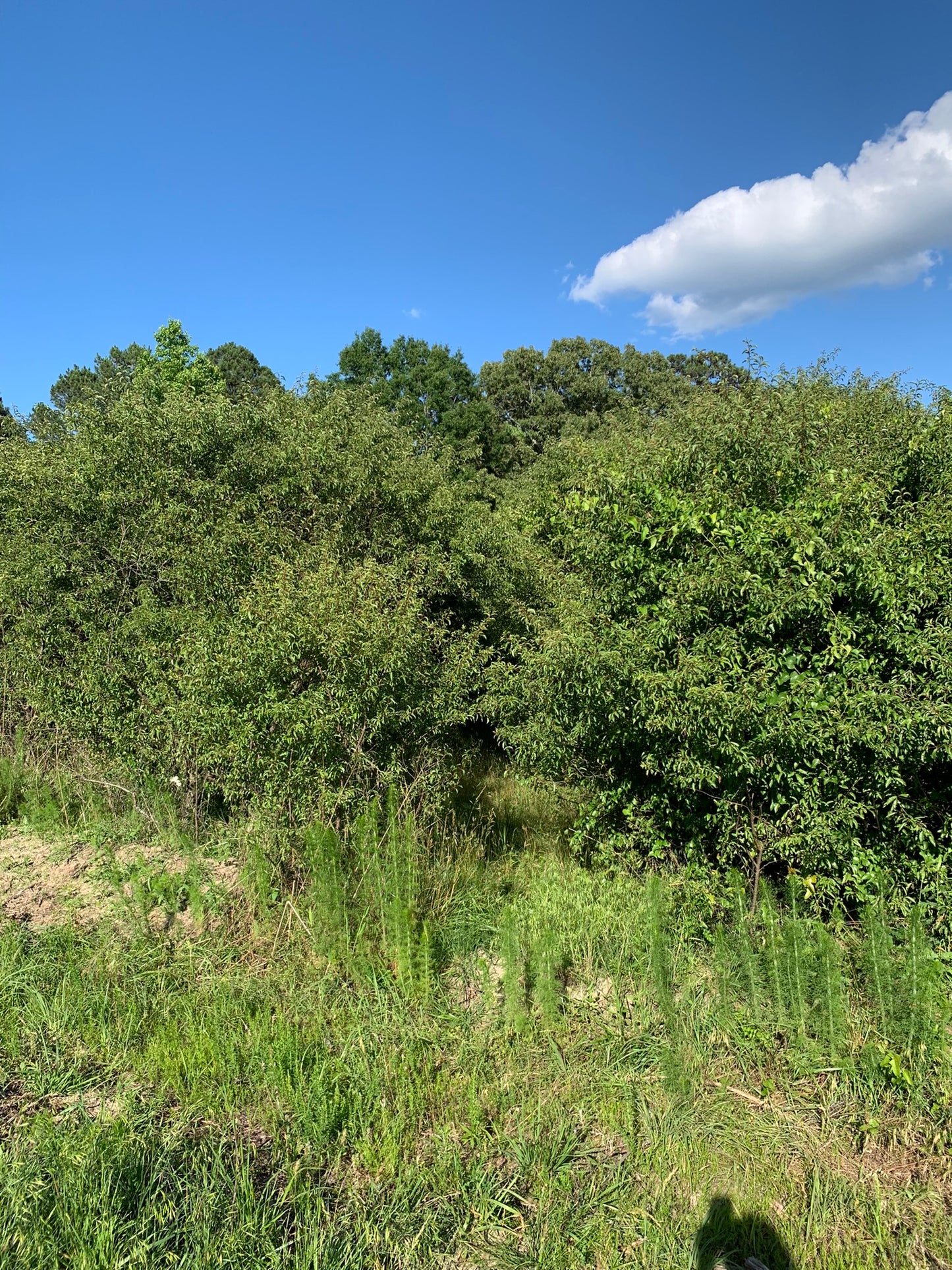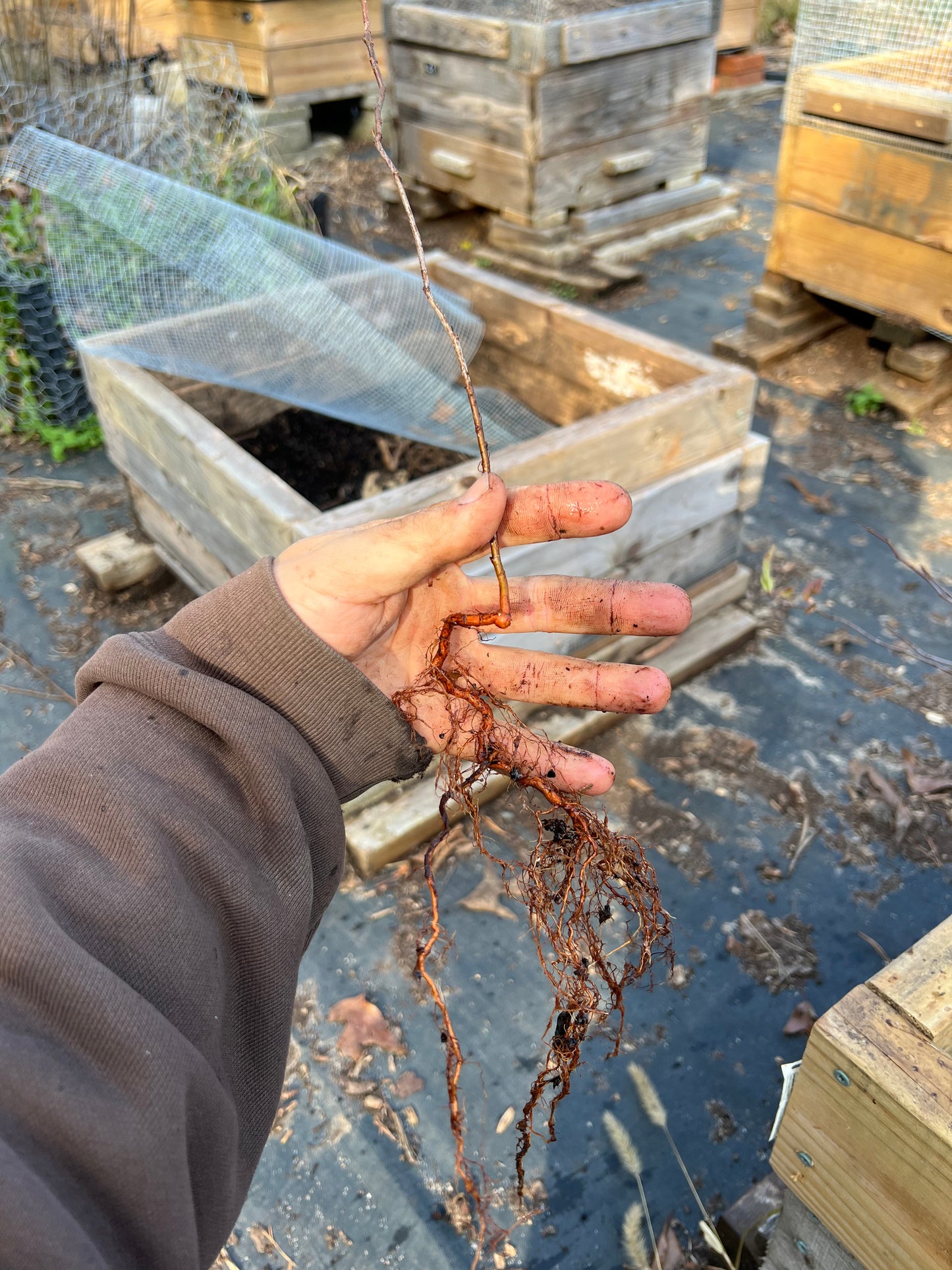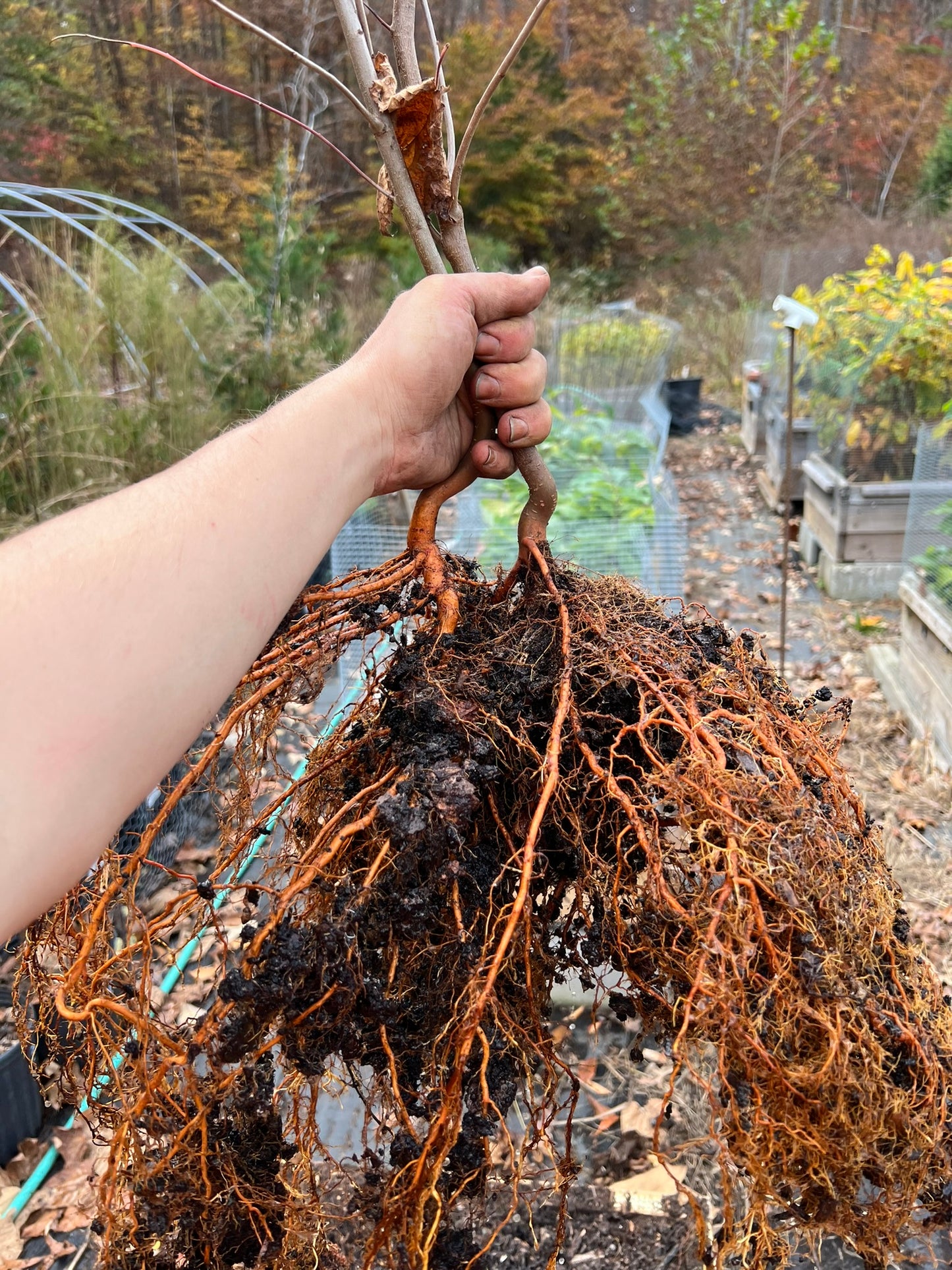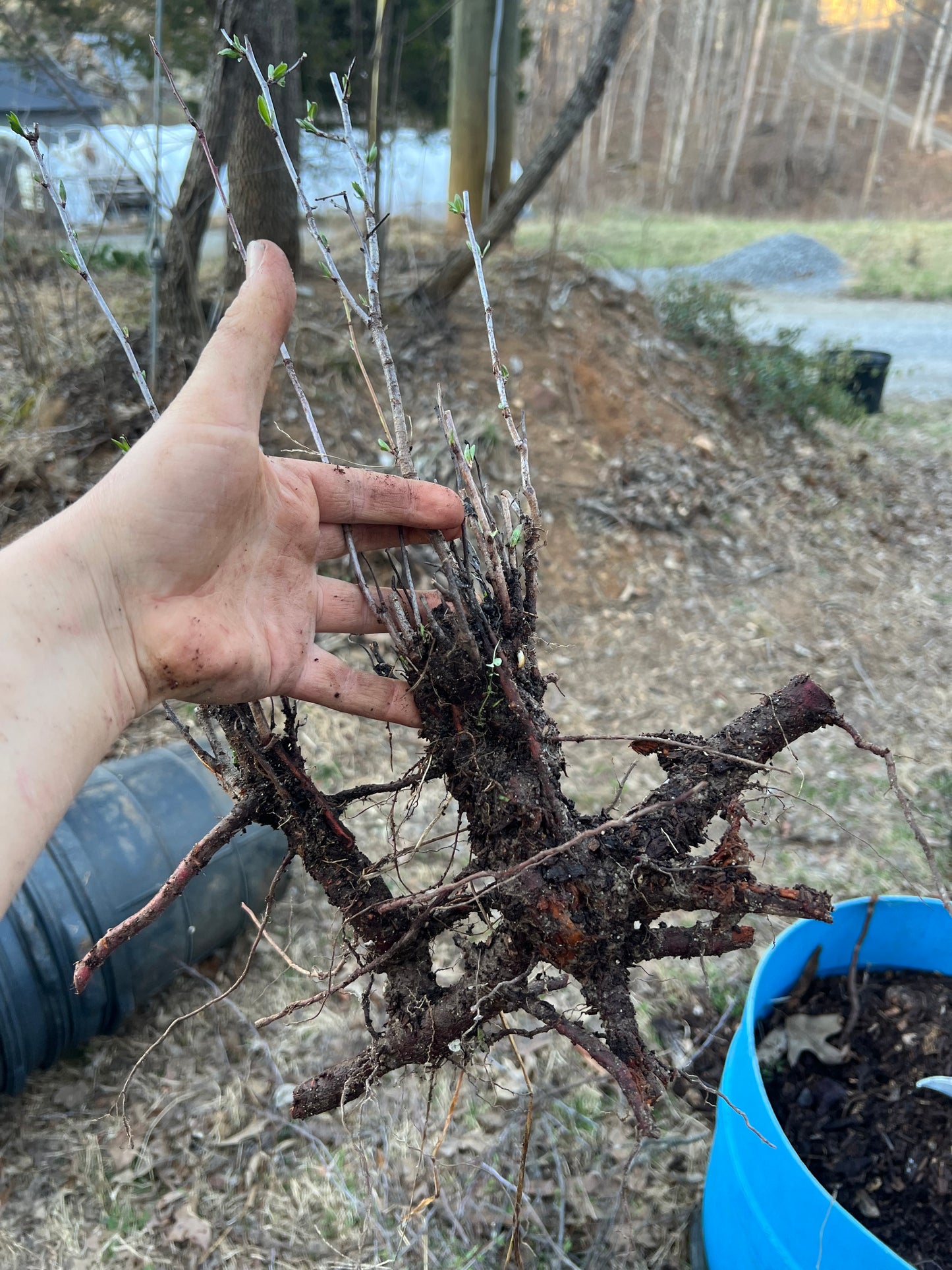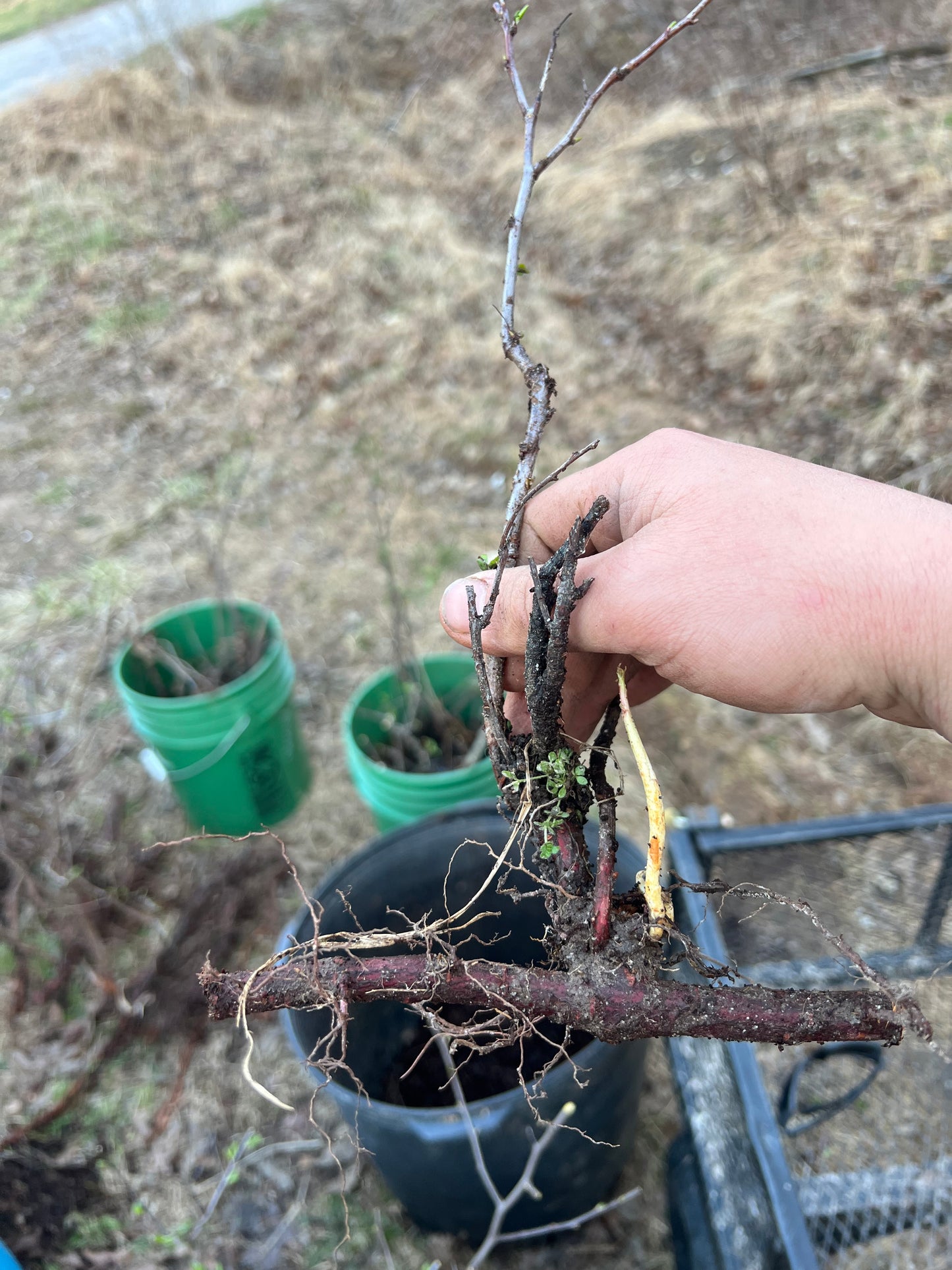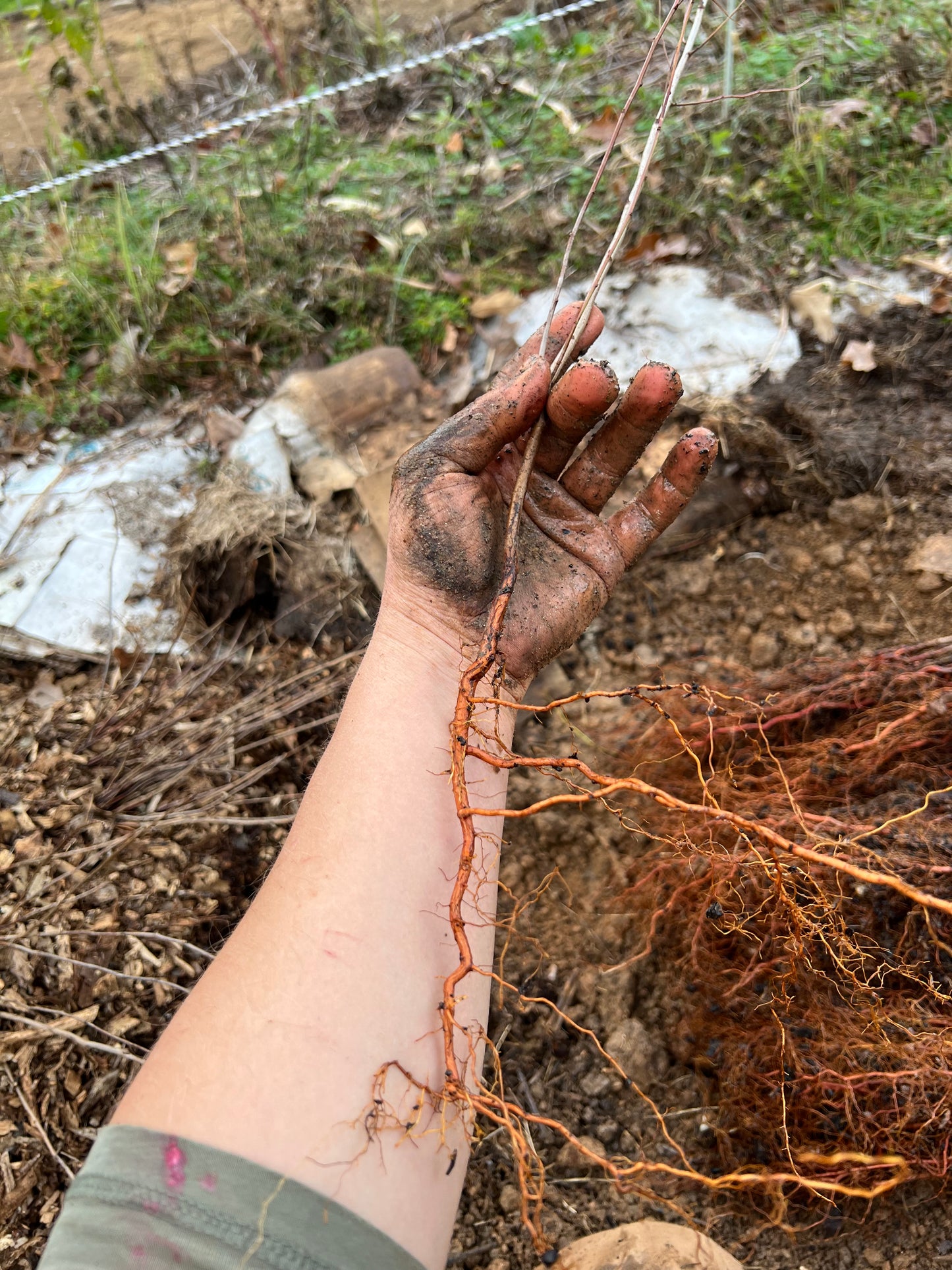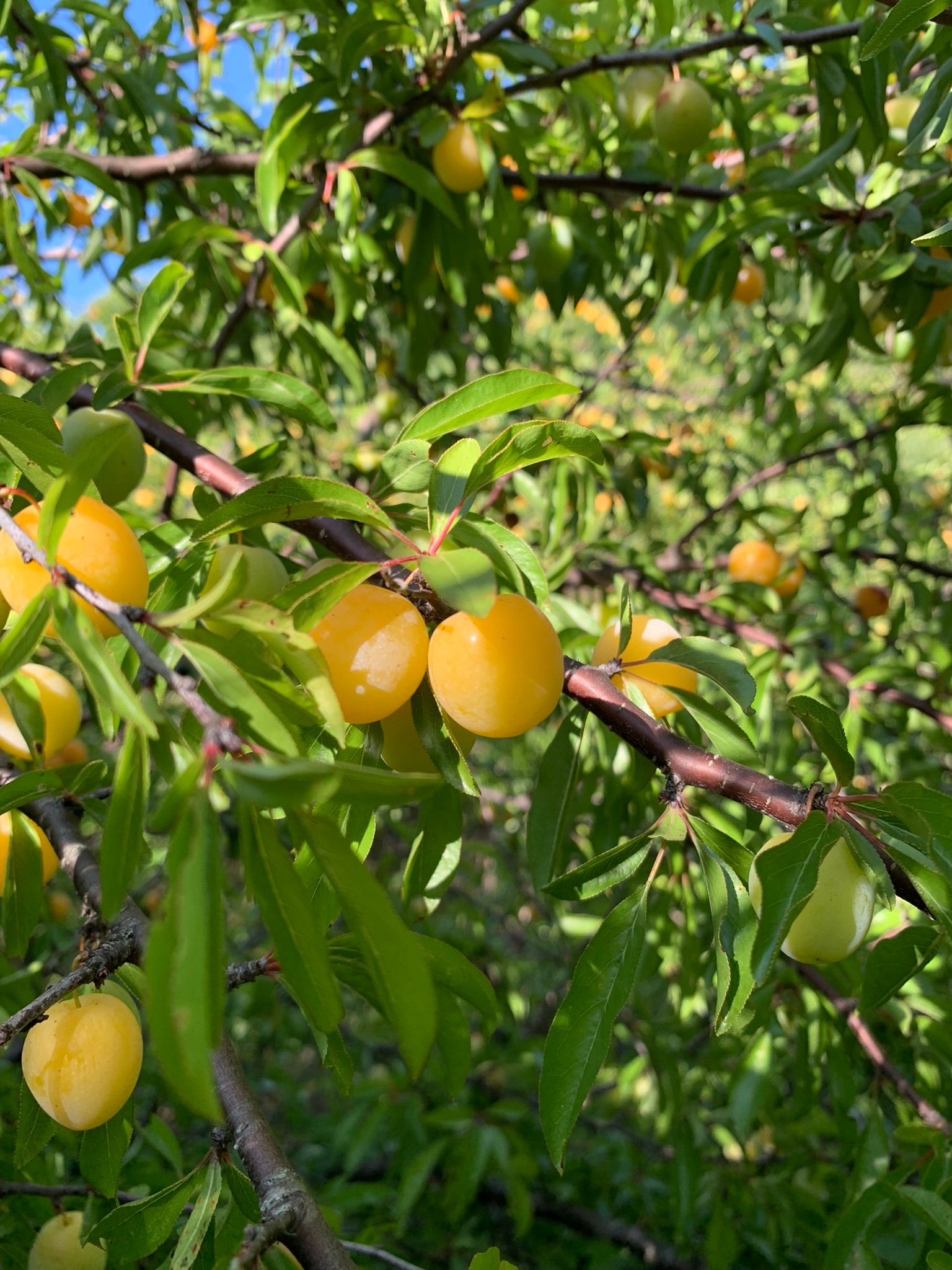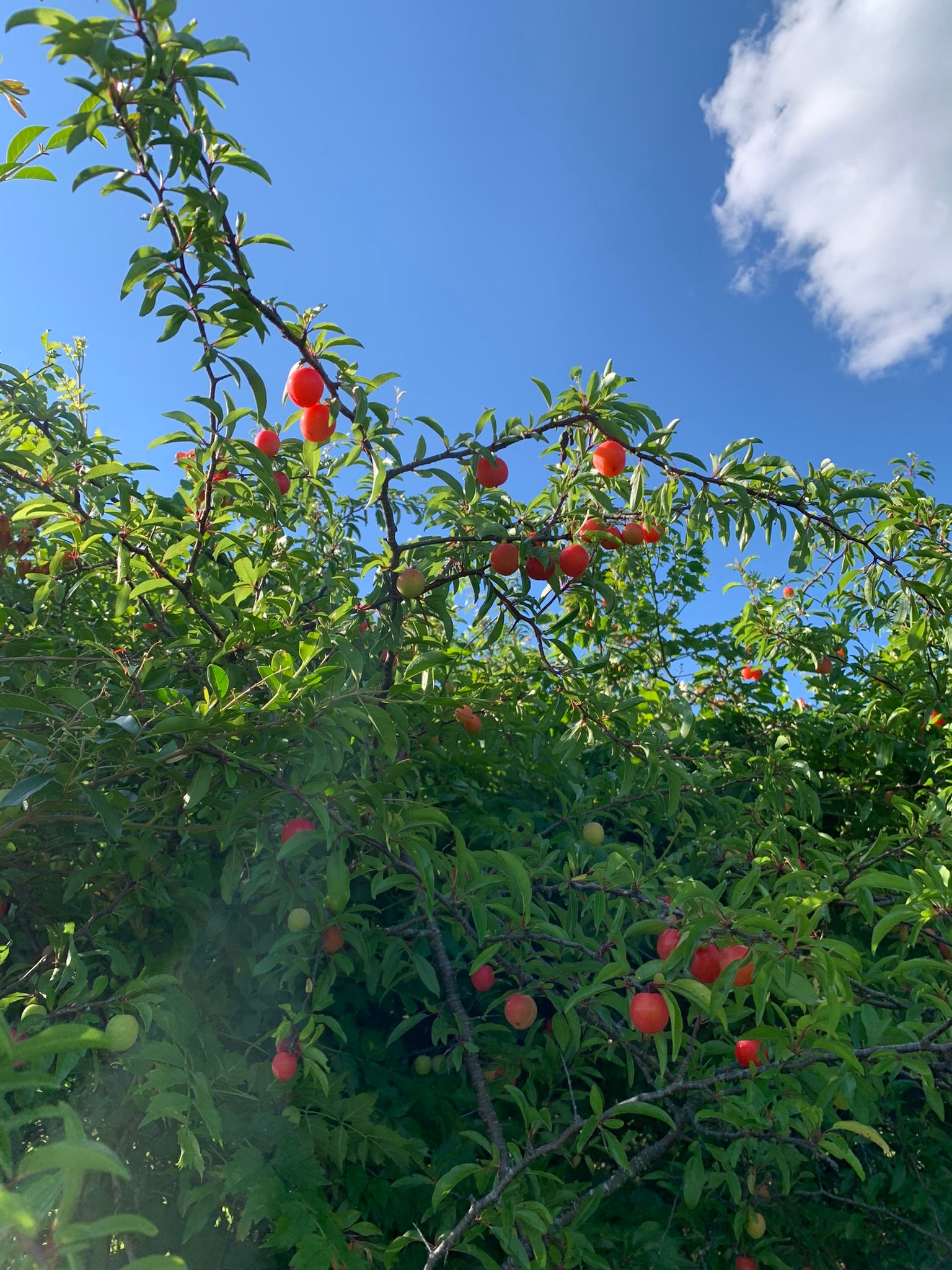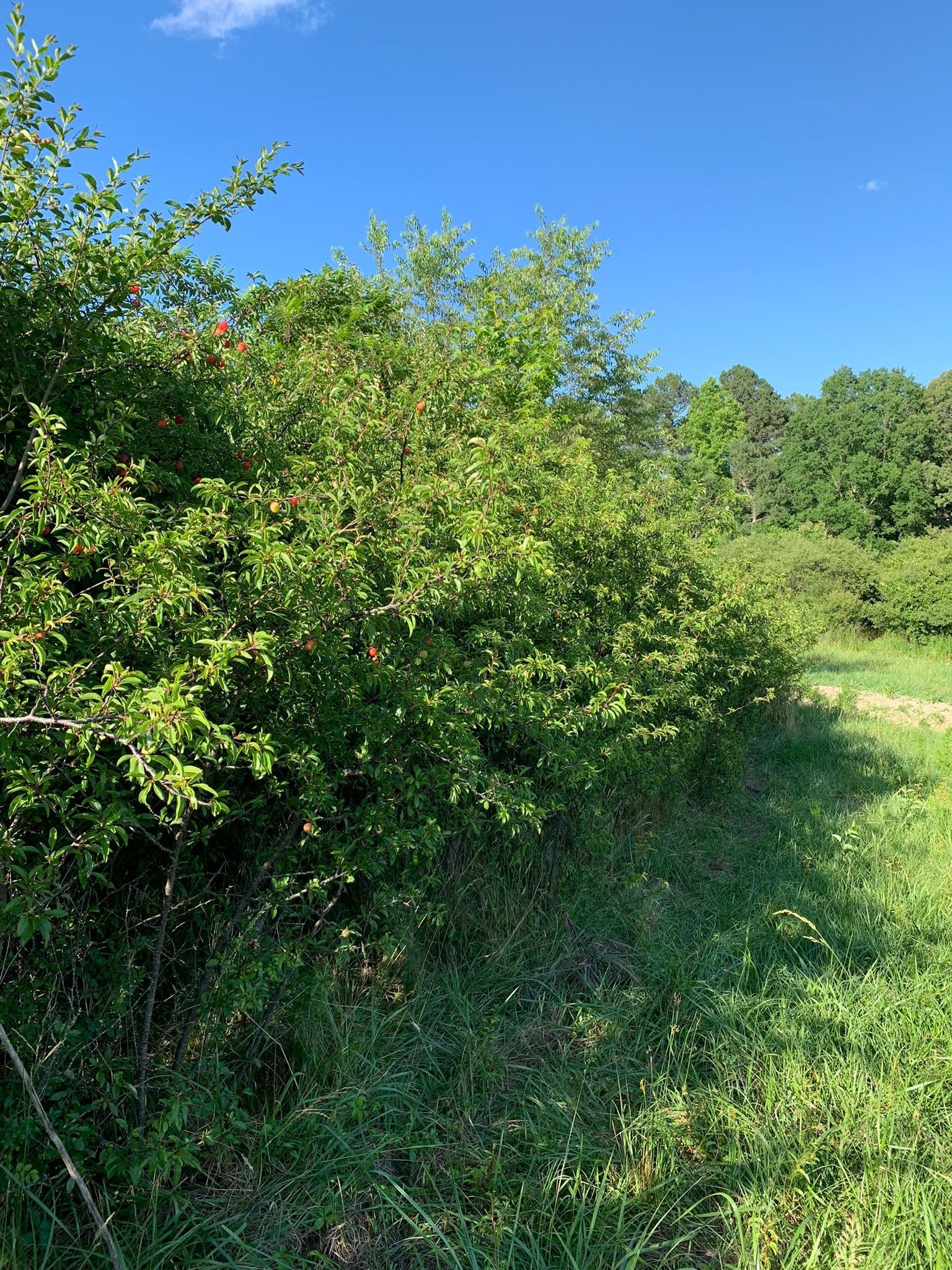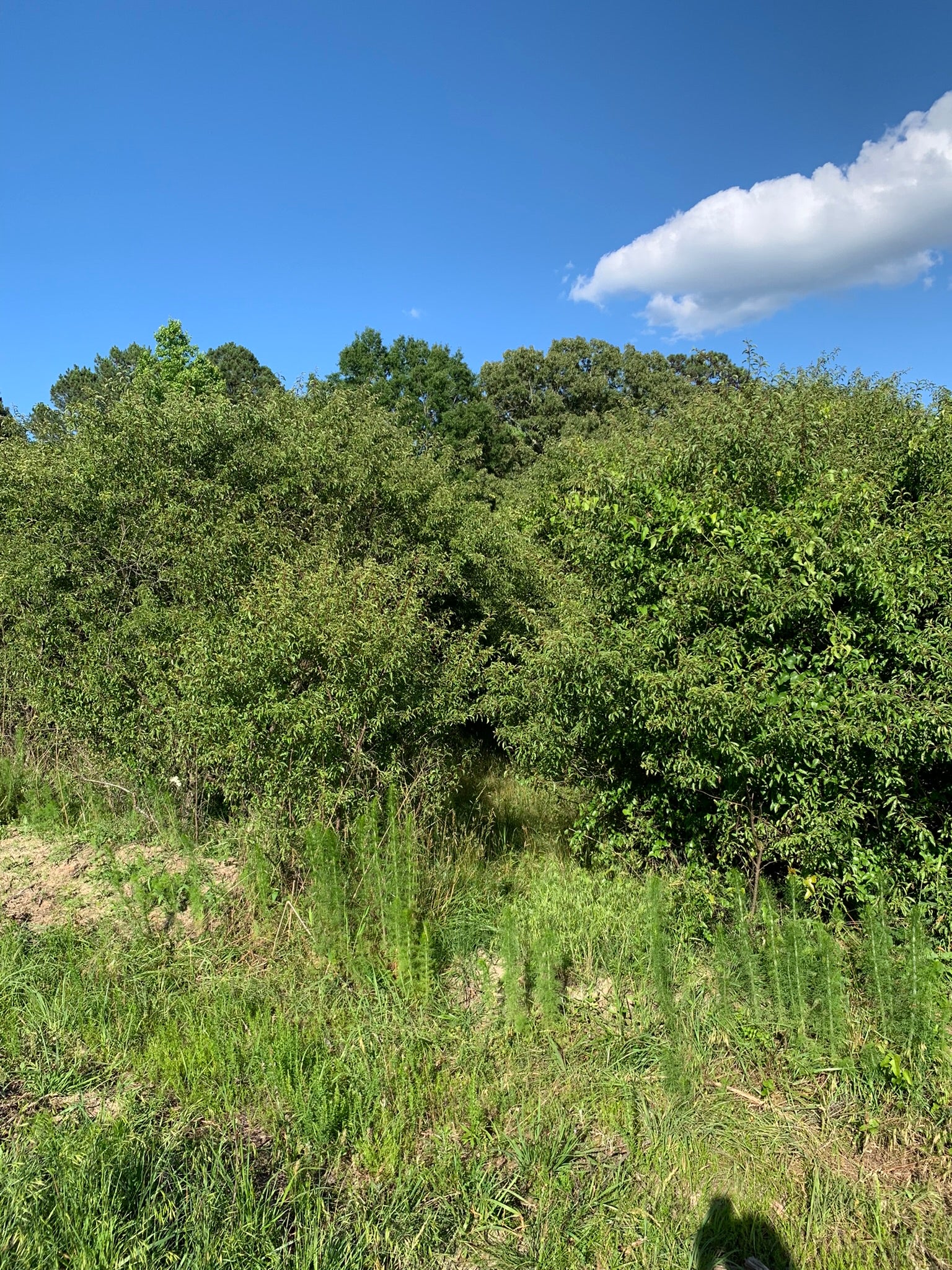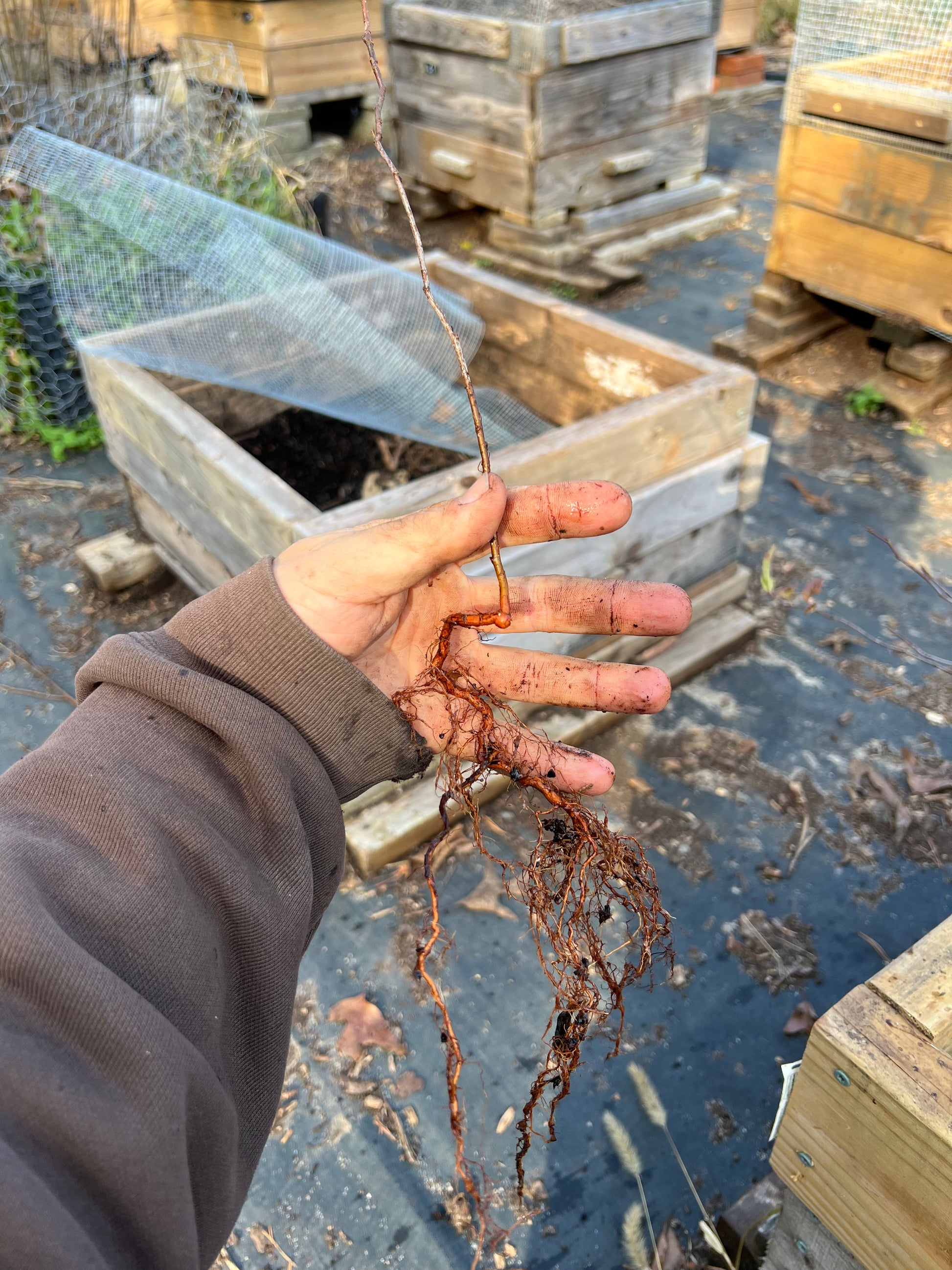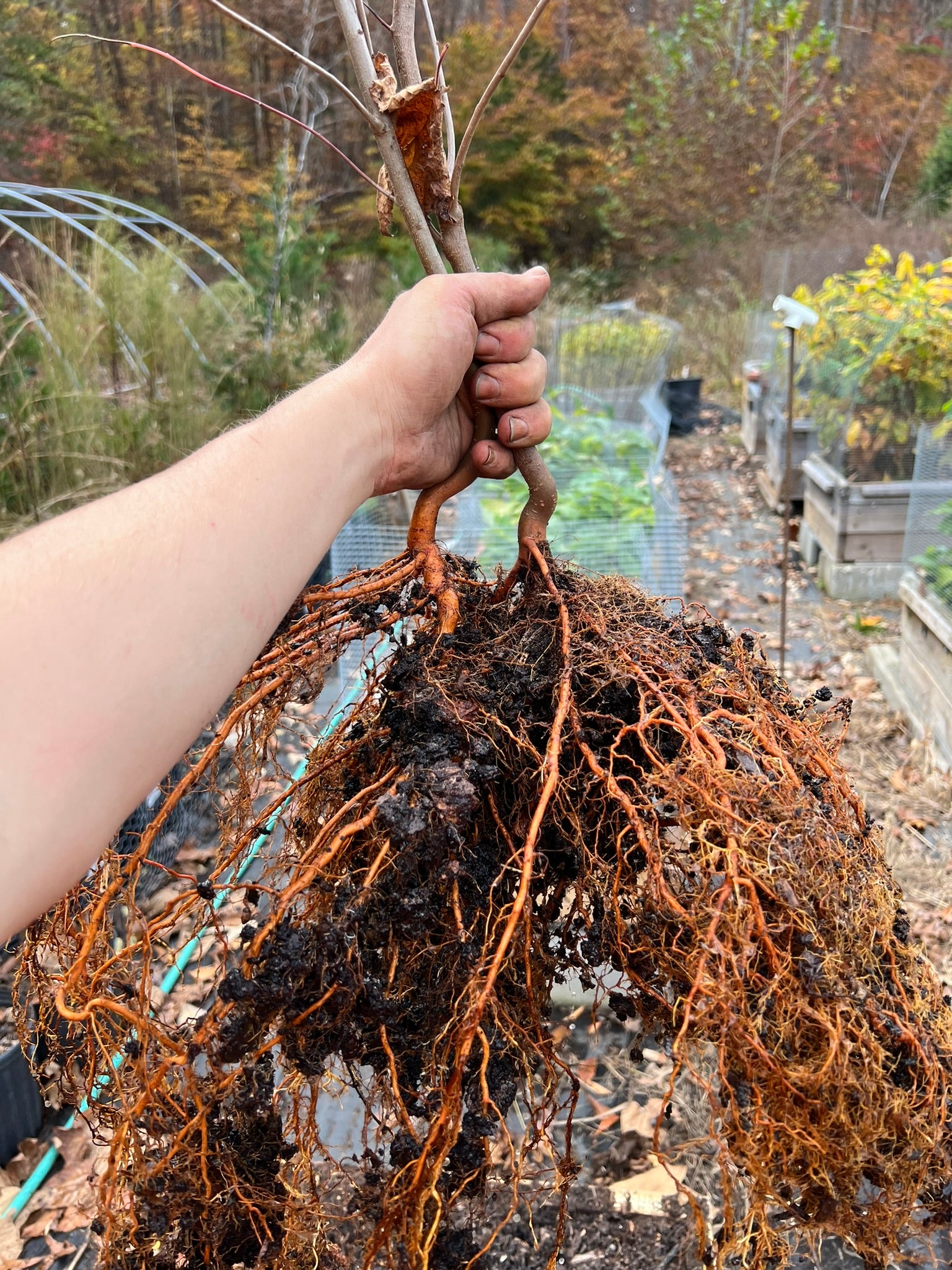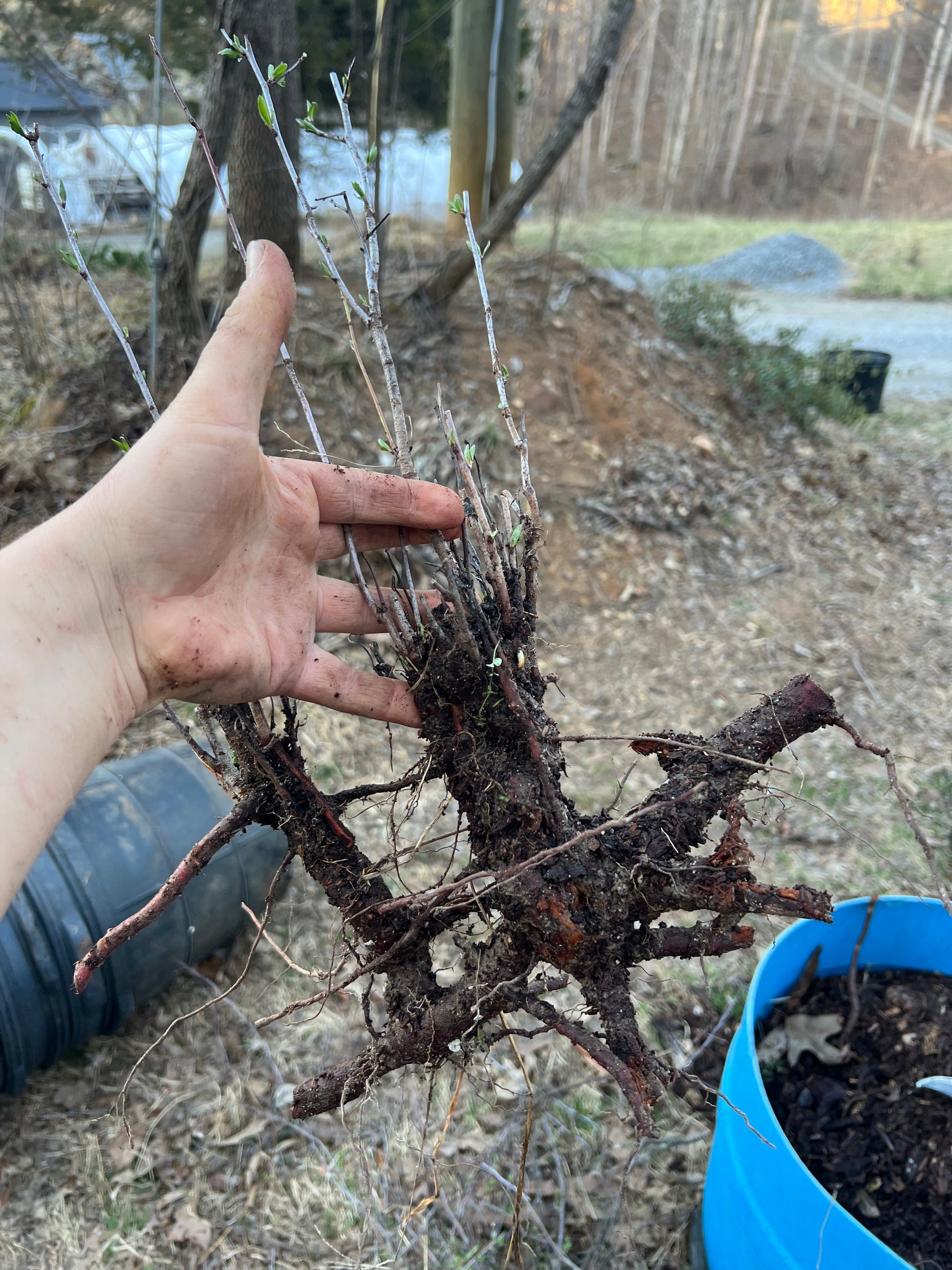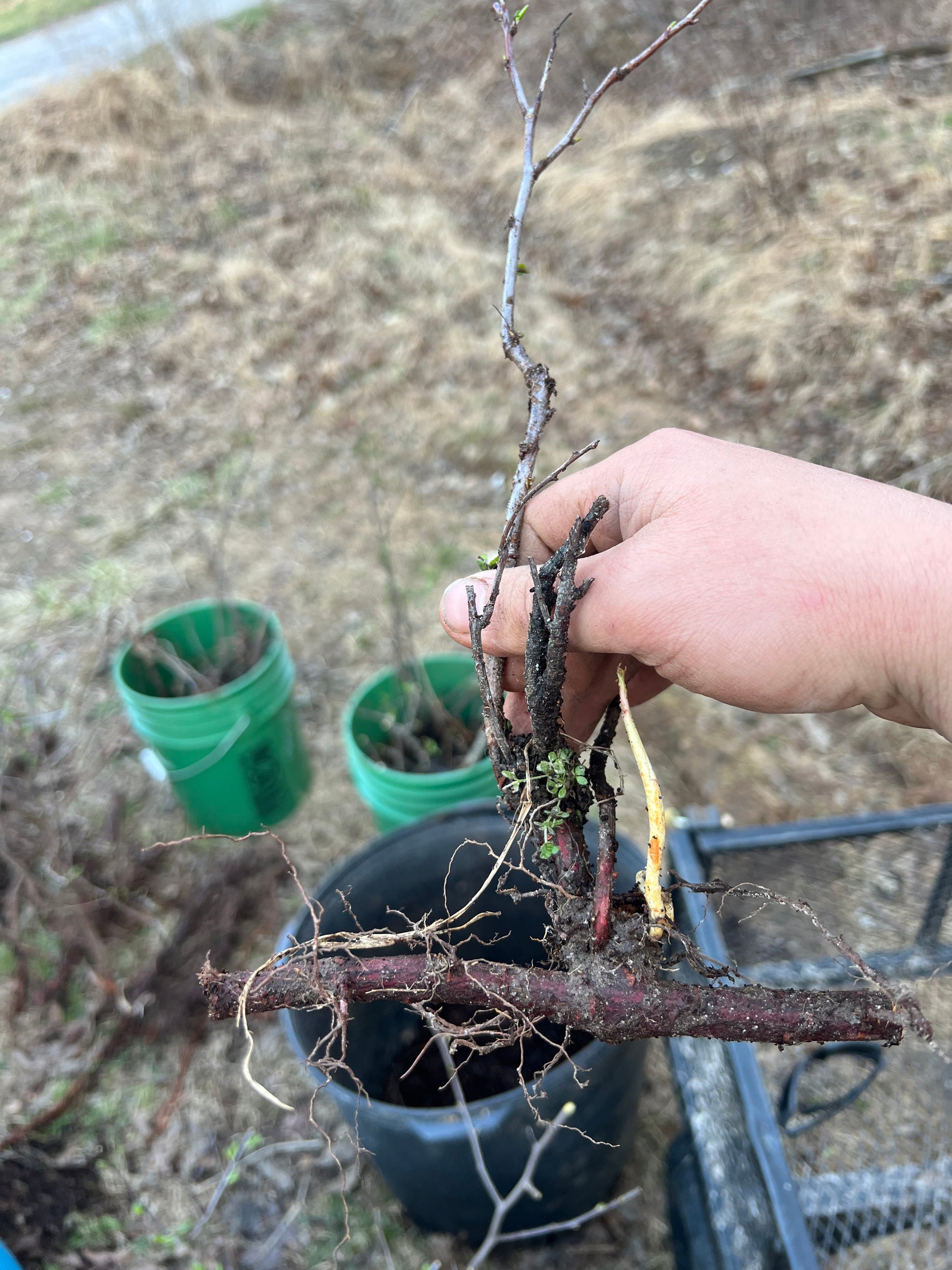Living Soil Tree Farm
Wild Plum
Wild Plum
Couldn't load pickup availability
Wild plum
There over a dozen species of plum native to this part of the world. Across all these species you can find a plum adapted to almost any environment this continent has to offer. Some species are short and multi stemmed, others are taller and can be a single stem. Some send out vigorous suckers while others are less likely to spread in this fashion.
In current times wild plums are somewhat rare however as recently as 40-50 years ago they were a common sight. They can often be observed in hedgerows, meadows, and forest clearings. Wild plums are typically small vigorous shrubs. Most have an ability to send out suckers and expand to create large dense patches. Like other species in the stone fruit family their blooms offer forage for insects early in the season when few other flowers can be found. Wild plums typically respond well to low intensity fires. They need full sun in order to express fast growth and good fruit production however they will also survive and grow in shady conditions.
Because these plums evolved here they are able to produce fruit without any sprays and minimal human care. That said wild plums will still respond positively to good tree care practices such as pruning, mulching, and compost. The plums themselves can range in color and flavor but are generally small in size. Flavor can vary widely from seedling to seedling. Many folks enjoy making jams and preserves with native plums. They are great for wildlife food and work well in wind breaks and hedgerows. Like other native plants they play a key role in supporting wildlife of all kinds. Native insects use the shrubs for food and habitat. Their thickets provide cover for animals of all kind, especially birds. Most native plums have some small thorns. This helps deter browsing animals.
Wild plums are amazing and hardy plants. Plum seed can sometimes experience double dormancy so it can be tricky to anticipate when we will see germination in the nursery. There are over a dozen species of native plum are we are itching to grow as many as we can! If you come across a patch that is producing a lot of fruit we would love to explore buying seed from you (or exploring a trade option). To date we have grown Chickasaw plums & beach plums.
2025 Selections
Chickasaw Plum
Chickasaw plum is a southeastern species of wild plum that thrives in the hot and humid south. Unlike domestic plums which suffer many pest issues in the south, Chickasaw plums are relatively bulletproof in terms of pests. Many native peoples across the southeast cultivated wild plums prior to the arrival of Europeans. The Chickasaw plum we know today is a result of that relationship. Like many other wild plums Chickasaw plums are fire adapted and will resprout with vigor after a fire. Coppicing or animal browse can mimic fire to some extent.
They do best with full sun and will thrive in a prairie environment. At most they will reach 15 feet tall although 10-12 feet is more common. Once established they will quickly spread via suckers forming a dense patch. These patches make incredible habitat for all sorts of wildlife. The plums are relatively small compared to domestic plums and typically come in the colors of red and yellow. They are good for fresh eating and for making jams. All of our seed this year (2025) came from several patches growing at Pandoland outside of Raleigh NC. Check out Project Pando at this link (below) to learn more about this site! We have made several video tours of the many conservation projects at Pandoland. These videos can be found on our youtube.
https://www.leaflimb.com/project-pando/
Beach plums
Beach plum is a low growing native plum species typically found in sandy soils near the coast. Our seed came from several populations of beach plums across NC and NJ. This species is known for its drought resistance. There has been some breeding and selection work done in NJ to explore this species as a commercial fruit. It is common for folks to be very protective of wild patches of beach plum that they find, only telling very close friends the location of the patch. The fruits are highly sought after by foragers and plum enthusiasts. Beach plums can grow in a range of soils but it thrives in sand. No matter the soil type they tend to need well drained soils. We have had decent success planting them in clay soils by planting in mounds to improve drainage.
Materials
Materials
Shipping & Returns
Shipping & Returns
Dimensions
Dimensions
Care Instructions
Care Instructions
